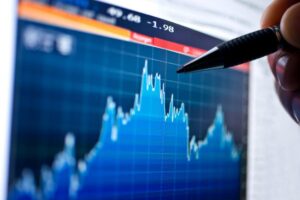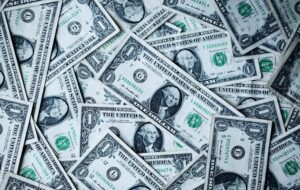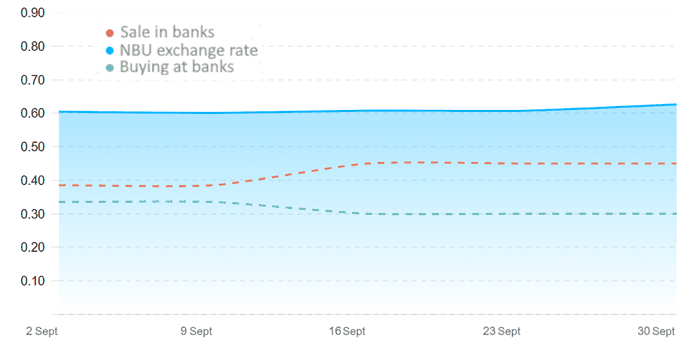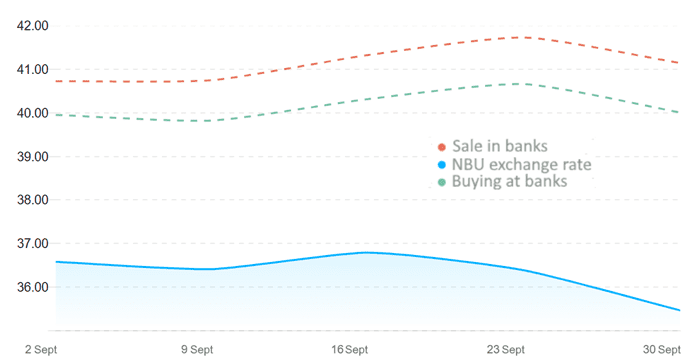
Asia-Pacific stock indices are rising in trading on Monday.
Investors continue to monitor the quarterly earnings season and evaluate fresh statistics from China.
China’s Shanghai Composite index was up 0.4 percent by 8:20 a.m. Hong Kong Hang Seng added 3.6%.
Traders remained optimistic amid unconfirmed reports last week that Chinese authorities may start loosening covid restrictions and abandon its zero-tolerance COVID-19 policy in March. However, Beijing made clear over the weekend that it is still committed to a tough fight against the coronavirus, Trading Economics wrote.
Meanwhile, Goldman Sachs experts think that the optimism of market participants may persist for 2 to 3 months and the market itself may grow by 20% due to this.
Shares of semiconductor maker Hua Hong Semiconductor Ltd. jumped 16%. The company plans to list on the Shanghai Stock Exchange and may raise up to $2.5 billion.
On the Hong Kong Stock Exchange, shares of developer Country Garden Holdings Co. Ltd. (+13.4%), optical device maker Sunny Optical Technology Group Co. Ltd. (+8.4%) and biopharmaceutical Wuxi Biologics (Cayman) Inc. (+7.7%).
China’s exports in October fell 0.3% year on year to $298.37 billion, according to the General Administration of Customs of the People’s Republic of China. Analysts polled by The Wall Street Journal had forecast a 4% increase. It added 5.7% in September.
Imports fell 0.7% year on year to $213.17 billion in October after rebounding 0.3% in September. Economists had expected the figure to be unchanged last month. China’s foreign trade surplus reached $85.2 billion in October, compared with $84.7 billion a month earlier and $84.8 billion a year earlier. Experts estimated the October surplus at $95.8 billion.
Japan’s Nikkei 225 was up 1.2% by 8:35 a.m.
Shares of toy maker Sanrio Co. that owns the Hello Kitty brand are up 13%. The company increased its net profit 1.5 times in the first fiscal year and improved its full-year outlook.
Also among the leaders in the Japanese indicator are securities of JFE Holdings Inc.(+7.5%) investing in the steel business, transport and logistics company Kawasaki Kisen Kaisha Ltd. (+6.6%) and printer maker Konica Minolta Inc. (+5.8%).
Sharp Corp., the Japanese unit of electronics maker Foxconn Technology Group, was down 2.7 percent. The company reported a net loss last quarter and cut its outlook for the year.
South Korea’s Kospi index was up 0.9 percent by 8:45 a.m.
The stock price of Samsung Electronics Co., one of the largest chip and electronics makers in the world, rose 1.2%, the value of Hyundai Motor jumped 4%.
Australia’s S&P/ASX 200 index rose 0.6% on Monday.
Share prices of the world’s largest mining companies BHP and Rio Tinto added 5% and 3.8% respectively.
Meanwhile, Coronado Global Resources Inc. shares are down 7% on news that the company terminated merger talks with U.S.-based Peabody Energy Corp.

Oil prices are declining on Monday morning after a strong growth following last week’s results, driven by hopes for a softening of the approach of the Chinese authorities to combat the coronavirus.
The price of January futures for Brent at London’s ICE Futures Exchange stood at $97.59 per barrel by 7:06 a.m., down $0.98 (0.99%) from the close of the previous session. At the close of trading last Friday those contracts grew by $3.9 (4.1%) to $98.57 per barrel.
The price of WTI futures for December at the electronic trading on the New York Mercantile Exchange (NYMEX) is $91.44 per barrel by that time, down $1.17 (1.26%) from the previous session. The contract rose by $4.44 (5%) to $92.61 per barrel at the end of last session.
Brent gained 5.1% last week to finish at its highest level since late August, while WTI gained 5.4%.
The Wall Street Journal wrote last Friday, citing several sources, that Zeng Guang, a former top epidemiologist at China’s Center for Disease Control and Prevention (CDCP), said during a conference that a significant change in the country’s authorities’ approach to the coronavirus pandemic was expected in 2023.
Over the weekend, however, Beijing reiterated its intention to adhere “rigorously” to a “zero tolerance” policy for COVID-19.
“Traders believe China will be a driver of fuel demand growth at some point next year on the back of the country’s accelerating economic growth,” said SPI Asset Management managing partner Stephen Innes.

The dollar showed moderate gains against major world currencies Monday morning.
The ICE-calculated index, which shows the U.S. dollar against six currencies (euro, Swiss franc, yen, Canadian dollar, pound sterling and Swedish krona), is up about 0.1%. The broader WSJ Dollar Index is up 0.2%.
The euro/dollar pair is trading at $0.9950 by 7:45 a.m. Q, versus $0.9960 at the close of last Friday’s session, the euro is losing about 0.1%.
The dollar/yen is up 0.3% at 147.08 yen from 146.62 yen at the end of last week.
The pound is trading at $1.1333, up from $1.1377 at the close of the previous session.
Currency traders continue to try to predict the future trajectory of Federal Reserve interest rates. Currently, the market generally expects the Fed to slow the rate hike in December and raise it by 50 basis points after raising it by 75 bps at four previous meetings, Trading Economics writes.
In addition, market participants are waiting for data on October inflation in the U.S., which may affect the Fed’s decision. The report will be released Thursday, and analysts polled by Trading Economics on average expect it to point to a slowdown in inflation in October to 8% from September’s 8.2%.
Meanwhile, the mainland yuan is down 0.4% to 7.2119 per $1, and the offshore yuan, which is traded in Hong Kong, is down 0.54% to 7.2154 per $1.
The Wall Street Journal wrote last Friday, citing several sources, that Zeng Guang, a former top epidemiologist at China’s Center for Disease Control and Prevention, said during a conference that a major change in the country’s approach to the coronavirus pandemic was expected in 2023.
Over the weekend, however, Beijing reiterated its intention to adhere “rigorously” to a “zero tolerance” policy for COVID-19.
“Previous practices have shown that our prevention and control plans, as well as a series of strategic measures, have been absolutely correct,” Bloomberg quoted CDCP official Hu Xiang as saying.
Quotes of interbank currency market of Ukraine (UAH for 1 RUB, IN 01.09.2022-30.09.2022)


Holding company “Kyivmiskbud” has commissioned another completed object of “Ukrbud” – Residential Complex “Gvardeysky”.
According to the company’s press service, a certificate confirming the conformity of the completed facility and its readiness for operation has been issued by the State Architecture and Town Planning Inspectorate of Ukraine.
Residential complex “Gvardeyskiy” became the 11th commissioned complex out of 18 accepted by “Ukrbud” objects. To date, commissioned were: Residential Complex “Harmony”, “Sunny Riviera”, “Pectoral”, “Novomostitsky”, “Kharkovsky”, “Shevchenko”, Freedom and partly “Zlagoda”, “Podol Grad” and “Oberih-2”.
Holding company Kyivmiskbud was created on the base of assets of state communal building corporation Kyivmiskbud in 1994 by combination of control stock of 28 enterprises and other assets in its authorized capital. It consists of 40 JSC, in which the company holds the shares, six subsidiaries and 51 companies with the rights of the associated member.
The main shareholder of PJSC HC Kyivmiskbud, according to the National Securities and Stock Market Commission (SSMSC), as of September 2022 is the Kyiv City Council (80%).
Quotes of interbank currency market of Ukraine (UAH for €1, IN 01.09.2022-30.09.2022)
